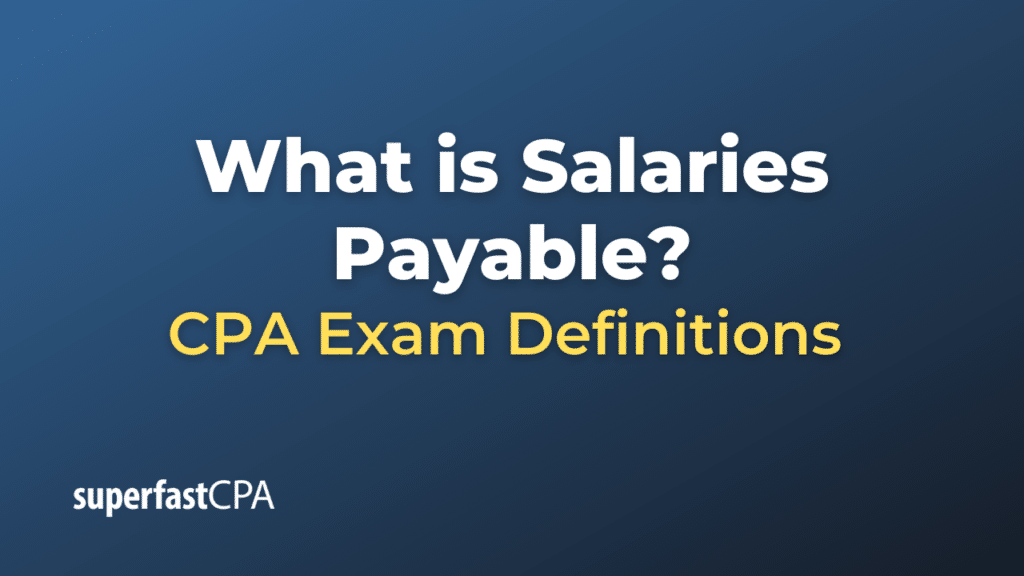Salaries Payable
“Salaries Payable” is a liability account in accounting that represents the amounts owed to employees for services rendered but not yet paid. It indicates the obligations a company has to its employees that will be settled in the future. When a company owes its employees their wages or salaries at the end of a period but will pay them in a subsequent period, it records this liability in the Salaries Payable account.
Key points about Salaries Payable:
- Type of Account: Salaries Payable is a liability account and is reported on the balance sheet under current liabilities, given that these obligations are typically settled in the short term (e.g., the next pay cycle).
- Accrual Accounting: The use of a Salaries Payable account aligns with the accrual method of accounting, which dictates that expenses should be recognized when incurred, not necessarily when paid.
- Relationship with Salaries Expense : When salaries are earned by employees but not yet paid, a company would recognize the obligation by debiting (increasing) the “Salaries Expense” account and crediting (increasing) the “Salaries Payable” account. Once payment is made to employees, the “Salaries Payable” account is debited (decreased), and the “Cash” account is credited (decreased).
- Reflects Short-Term Obligation: Salaries Payable indicates amounts that will be paid out soon, typically within the next pay cycle, making it a short-term liability.
Example of Salaries Payable
Let’s illustrate the concept of “Salaries Payable” with a hypothetical scenario involving a bookstore named “Readers’ Haven.”
Readers’ Haven has 3 employees:
- Alice, a store manager earning $1,000 per week.
- Bob, a cashier earning $500 per week.
- Charlie, a stock clerk earning $500 per week.
The employees are paid bi-weekly. Their workweek ends on Sundays, but they get paid for those two weeks on the following Friday.
For the last week of March, all three employees worked their regular hours. As March ends on a Thursday, the bookstore owes one week of wages to its employees, which will be paid the next Friday in April.
Calculations:
- Alice: $1,000
- Bob: $500
- Charlie: $500
Total Salaries for the last week of March: $1,000 + $500 + $500 = $2,000
On March 31st, to acknowledge the amount owed to the employees for their work in the last week of March:
- March 31 (recognizing the accrued salary):
Debit (Dr.) Salaries Expense: $2,000
Credit (Cr.) Salaries Payable: $2,000
This entry shows that Readers’ Haven has recognized an expense of $2,000 for the salaries of its employees for the last week of March. The credit to Salaries Payable indicates that this amount is owed to the employees but hasn’t been paid yet.
When Readers’ Haven pays its employees on the following Friday in April:
- April 8 (settling the liability):
Debit (Dr.) Salaries Payable: $2,000
Credit (Cr.) Cash: $2,000
Now, the Salaries Payable account is reduced by the amount paid, and the bookstore’s cash balance decreases by the same amount.
In this example, “Salaries Payable” serves as a temporary holding account that acknowledges the bookstore’s obligation to its employees. Once the obligation is settled, the amount in the “Salaries Payable” account returns to zero until the next time salaries accrue without being immediately paid.













